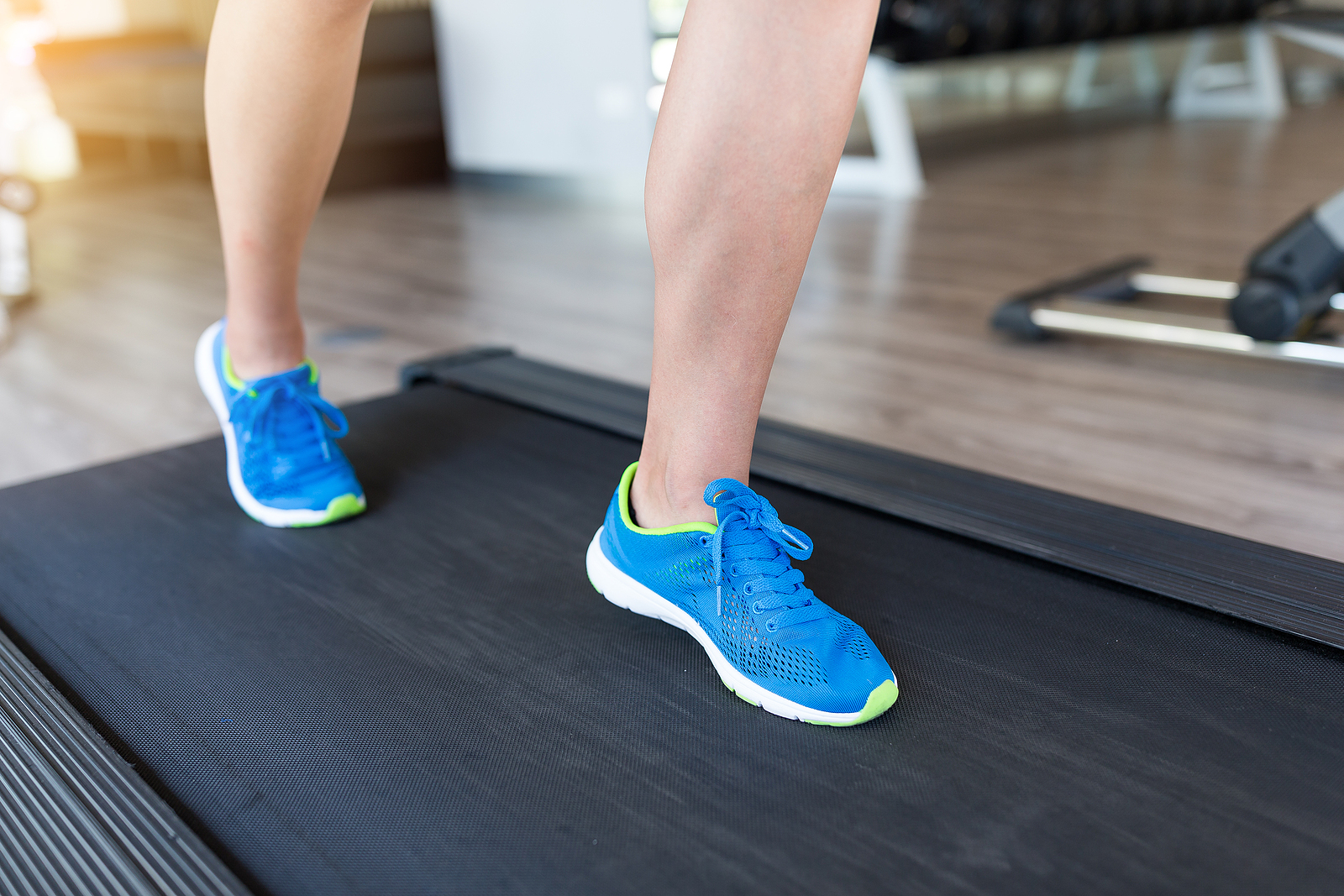Canes are pretty simple devices and in some cases, can literally just be a wooden stick with a handle and a rubber point.
This could lead some seniors to thinking they’re easy to use, but proper use actually requires a little know how.
It’s really all about having the cane set to the right height, having the cane in the correct hand, and timing cane placement properly with each step.
Don’t worry, it’s not as complicated as it may sound – with the right guidance and a little practice, you’ll be able to master walking with a cane in no time.
In this guide, we’ll walk you through the key steps to using a cane properly, helping you maximize safety and independence anywhere you go.
Choosing the Right Cane

First things first though, you have to make sure you’re using the right kind of cane.
Canes comes in a lot different shapes and sizes these days. Adjustable, wooden, folding… you name it and there’s probably a cane in that style.
Regardless, most canes can still be classified based on the shape of the tip or base:
- Single Point Canes – these are your classic canes that come with a single point at the base. They don’t provide as much support as quad canes, but the smaller tip allows for faster ambulation (these are the preferred cane for most seniors).
- Quad Canes – these canes come with 4 points at the bottom, allowing them to provide considerably more support. The size and spacing between the points can vary quite a bit. Quad canes are great for seniors who’ve had strokes or otherwise aren’t able to use walkers. Just know that, when used correctly, quad canes slow you down considerably.
- Tripods, platforms, etc – you’ll see other canes that come with tips that don’t really fit the other 2 categories. Some have 3 tips (tripod), others have little flexing platforms that vary in size. I’d consider most of these in the same category as single point canes, as they’re often used similarly.
If you feel pretty confident with your walking and only need a little bit of support for added security, you’ll likely be best off with a single point cane.
Honestly, I’m not a fan of quad canes.
Yes, they have their place and in the right circumstances, can be the best option, but these are really best suited for seniors who need a lot of support to safely walk.
And in most of these cases, a walker is the better solution.
As mentioned earlier, a quad cane can be a decent substitution for a walker for seniors who can’t use both hands to hold on to an assistive device.
To use a quad correctly, you have to place all 4 points down on the ground at the same time with each step and this really slows things down.
I know, seniors like quad canes because they can stand up by themselves, but if this is what you’re looking for, I’d suggest you look into a cane with a really small base because most of them will stand up too.
Finding The Right Cane Height
Regardless of what kind of cane you’re using, it’s important to adjust it to the right height for optimal use.
This is where having an adjustable metal cane comes in handy, as it can easily be adjusted to varying heights to fine tune the fit.
I’m not against wooden canes, but you should make sure you find one with the correct height before purchasing.
I’ve seen a lot of patients that use hand me down wooden canes from other relatives and they’re usually the wrong height.
I’ve also had patients that decided to saw down their wooden canes and re-tip theirselves in order to adjust to the proper height – it actually worked pretty well, just make sure you have the carpentry skills necessary before ruining a nice cane.
Anyway, finding the right height for a cane is pretty easy.
Stand with the cane by your leg (either) and relax your arm down by your side – the cane handle should be at or just above the crease of your wrist.
This means that when you grasp the cane handle, you have just a little bit of bend in your elbow.
Personal preference can play a little role in adjusting your cane height, but just know that having your cane too high takes away from the stability it can provide.
Determining Which Side to Use the Cane On
A common misconception is that the cane should be used on the same side as the injury or weakness, but this incorrect.
The correct way is to actually use the cane on the opposite side of the affected leg.
For example, if your right leg is injured or weaker, you would want to hold the cane in your left hand.
This technique may seem counter-intuitive, but it helps balance your weight distribution and put less weight on the sore/weak leg.
It will also provide better stability while walking.
If you don’t have a weaker or painful leg, you can hold the cane in either hand, but most will prefer to place the cane in their dominant hand.
This fellow physical therapist has a great video demonstrating proper cane use.
Proper Walking Technique With A Cane
Walking with a cane requires a coordinated movement to ensure stability and efficiency. Here’s how to walk correctly with a cane:
- Hold the cane in your opposite hand: As mentioned earlier, hold the cane in the hand opposite to the weaker or injured leg (or in your dominant hand)
- Move the cane and affected leg together: Step forward with your weaker leg and the cane at the same time. The cane should move in sync with the affected leg, providing support as you transfer your weight onto it.
- Step forward with your stronger leg: After placing the cane and your weaker leg forward, step through with your stronger leg. This step should feel natural, and your weight should now be supported by the cane and your stronger leg.
- Repeat the process: Continue walking by moving the cane and weaker leg forward simultaneously, followed by the stronger leg. Keep a steady rhythm to maintain balance.
Simply put, regardless of which hand your cane is in, the cane and your opposite leg should hit the ground at the same time with each step.
This creates a natural feel while walking, while synching up you arm swing.
When starting out, keep your steps a little smaller and gradually increase step length as you become more comfortable with the sequencing.
Also make sure you aren’t stretching your steps out to match where you’re placing the cane – the cane placement should match your normal stride length.
Navigating Stairs with a Cane
Stairs can be challenging when using a cane, but with the right technique, you can safely navigate them.
- Going Up Stairs:
- Hold the handrail with one hand and the cane in the other hand.
- Step up with your stronger leg first.
- Then, bring your weaker leg and the cane up to the same step.
- Continue this pattern for each step.
- Going Down Stairs:
- Again, hold the handrail with one hand and the cane in the other hand.
- Place the cane and your weaker leg down on the next step first.
- Then, bring your stronger leg down to the same step.
- Repeat this process for each step.
If there’s no handrail, place the cane firmly on the step before moving your legs to ensure stability.
Maintaining Proper Posture
Good posture is important when using a cane. Here are a few tips to ensure you’re walking with the correct posture:
- Stand tall: Keep your back straight and shoulders relaxed. Avoid leaning forward or to the side, as this can throw off your balance and put unnecessary strain on your body.
- Look ahead: Keep your eyes looking forward, not down at your feet. This will help you maintain better balance and avoid obstacles in your path.
- Distribute your weight evenly: Use the cane to support your weight as needed, but try to distribute your weight evenly between your cane and your legs. This will help you walk more naturally and reduce the risk of over-relying on the cane. Don’t put too much pressure your cane!

Additional Safety Tips for Cane Use
To ensure your safety while using a cane, it’s a good idea to check your cane regularly to make sure it’s in good condition.
You’ll want to check the rubber tip regularly to make sure it’s still providing a good grippy surface.
Always wear shoes with good support and non-slip soles to reduce the risk of slipping or falling as well – sandals and other open toe shoes are a bad idea.
Always keep an eye on the kind of surfaces you’re walking on.
Use caution when walking on wet, icy, or uneven surfaces. If possible, avoid these areas or take extra care when navigating them.
When at home, make sure you keep your walking pathways clear of obstacles to reduce your risk of accidentally tripping over something.
Final Thoughts
Ok, I think that about does it.
I hope the above info didn’t make using a cane sound overly complicated because it really isn’t.
Canes are simple devices, but they really can make a significant difference when it comes to safety with mobility and walking.
By choosing the right cane, using the proper walking technique, and following safety guidelines, you can confidently navigate your daily activities with the support you need.
Whether you’re recovering from an injury or managing a chronic condition, mastering the use of a cane is an important step toward maintaining your independence and staying active.
As always, if you have any questions or comments, please leave ’em below and I’ll get back to you soon.




Great tutorial! Keep up the good work.
I appreciate the kind words and thanks for reading!